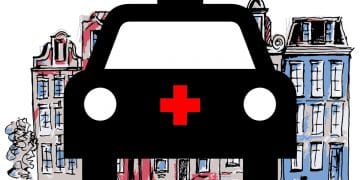Even though new taxi and PHV regulation may include a level playing field, it will also provide more space for new forms of mobility like ride hailing. That’s why the taxi and PHV industry must reinvent itself and branch out into other areas.
With a regulatory session moderated by Brussels Mobility Minister Pascal Smet, the presentation of innovations like ‘Mobility as a Service’, a look at long term socio-economic developments and a peek at adjacent business areas,Taxi & Mobility Update 2016 – ‘Solving the Mobility Puzzle’ provided a powerful and concise update of the latest developments.Taxi & Mobility Update returns to Brussels in April 2017.
“Safety and quality are paramount”
Brussels Mobility Minister Pascal Smet is in the last straight line of presenting his ground transportation bill for the Belgian capital. A bill which will undoubtedly give other forms of mobility more (legal) space and demand more innovation of the Brussels taxi sector. Whatever these plans are, Smet insists “Safety and quality will be paramount for any operator.”
Post-Brexit Simon Buggey (Transport for London) may have nothing to fear from ‘Brussels’ anymore, but the new London mayor is worried about the capitals’ air quality. A rapidly growing PHV-fleet (over 100.000) doesn’t exactly help. From 2018 onwards all taxis (25.000) must be electric. What to do?
The EU Commission (Peter Szatmari) is unsure too: apart from giving ‘guidance’ to EU member states how to deal with the ‘collaborative economy’ (banning operators is the last resort), it is running a research project into the taxi, PHV and ‘collaborative’ sector. First indications of changing EU policy can be expected after the summer.The last speaker of the conference, Jean-Charles Simon, presenting his study about large cities, confirmed that proper regulation for every operator is very much needed in these cities.
“Glad to have this overviewThe first three presentations of the conference packed a powerful punch: researcher Swetha Surender (Frost & Sullivan) looked at the next ten years in which we not only will have to deal with autonomous driving, but also with more connectivity (the Internet of Things connecting everything around us) and rapidly changing cognitive and social trends.
Richard Harris (Xerox) and Sampo Hietanen (MaaS Global) sketched the future of networked mobility in which Xerox provides a seamless back office between various (public) transport modes and MaaS strings together various mobility options in one app. Like the Whim app which has just been launched in the Helsinki area.“I had no idea there were so many different developments which are coming right at us”, said one conference attendee.“I’m glad to have this overview.”
More innovation needed: “Uber is not going away”
When it came to innovative systems: Jean Vachon (Taxelco) introduced the zappy ‘green’ Téo system in Montreal,Teemu Sihvola confirmed Helsinki’s Kutsuplus-system is waiting for a new chance and presented
Washington DC’s shared ride taxi system Split. Suzanne Hadley (Polis) showed that there is a lot of mileage left in automatic driving before we even get to the autonomous variant. Add to these new variants the need for different vehicles: Levent Erdogan (Karsan) showed it had never given up on a new electric cab (now being developed for London) and showed the Jest-Minibus, eminently suitable for shared taxi services.
James Cooper showed that Uber and other TNC’s are often one step ahead of the traditional taxi and PHV industry and that these trades need to up their game. Earlier lawyer Matt Daus had shown the state of play (in the US) in the hundreds of cour t cases against the TNC’s. “Uber is not going away, don’t for a moment be fooled into thinking that,” Cooper added, wondering whether the taxi trade has really woken up to the challenge at hand.
New markets
One way the industry is upping its game is by combining many different industry apps and companies in UpTop, the Global Taxi Network, said Oleg Kamberski (IRU), slowly inching towards representing and connecting a sizeable 10% of the world’s taxi industry.The main aggregator now in pole position seems to be Karhoo, introduced by its inventor Daniel Ishag, supplying London, five other large UK cities and soon launching in New York, Singapore and Europe.
The organisers of the conference, Challans & Faber Business Communications in Brussels, had lined up some top speakers from adjacent areas, like Max Zeumer from ‘disruptor’ Flixmobility which has spun a large network of long distance bus-routes across Europe and is now looking into other areas of mobility for ‘the last mile.’ UITP’s Kaan Yildizgoz presented an exciting comparison of taxi data and saw a clear opportunity for cooperation between public transport and taxis in times where the public purse is getting tighter. Finally Corrado Simontacchi showed how business travel is changing: not only the client, but also the traveller needs mobile information.There is (more) room for the taxi industry, but offering a good price is no longer enough.The customer needs service and assistance, plus an efficient and environmentally-friendly service via his smartphone.
Next year Taxi & Mobility Update 2017 will be held in Brussels at the beginning of April 2017. “For the sixth year we will be building a networking platform between the industry and other stakeholders
like government institutions, associations, regulators, suppliers and consultants”, says organiser Wim Faber. “We see that this formula works.”









